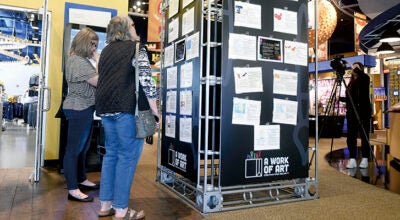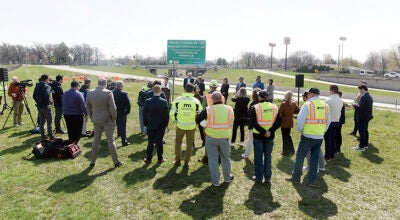From slaughterhouse to bus depot to rock club: The history of First Avenue
Published 8:46 am Saturday, November 11, 2017
Tom Weber, MPR News Staff
MPR News/90.1 FM
First Avenue is the stuff of music legend.
People talk about shows there like they talk about the moon landing: Did you see it? Do you remember?
Were you there for Joe Cocker? For Prince? Babes in Toyland? U2?
The squat black brick building in downtown Minneapolis has hosted thousands upon thousands of shows over the decades. The exterior is studded with painted stars, immortalizing the names that have played its stages.
Longtime Star Tribune music writer and critic Chris Riemenschneider has captured the nightclub’s history in a new book: “First Avenue.”
How well do you know First Ave?
It’s common local lore that the club was once a bus depot, but Riemenschneider takes music fans back even before that. The land where the building sits was once a slaughterhouse, when Minneapolis was “still a rural enough town that downtown had cattle in it,” he said.
“Supposedly people hear sheep and cows and goats still ‘til this day,” Riemenschneider said. There are enough paranormal tales surrounding the club to merit an entire section in the book on First Ave ghost stories. “It could just be drunk people hanging out.”
When the bus depot iteration of the building was first constructed, it wasn’t just benches and a garage. It was an “ornate complex,” Riemenschneider said. “What is now the 7th St. Entry — this dark, dingy nightclub — it was the restaurant of the depot … this super high-polished, bright sunlit cafe.”
The architecture later became critical.
“The design of the depot itself unknowingly accommodated the acoustics of the place, because there’s these curved walls.”
The building has not only a curved front wall on the corner, but also a curved wall behind the stage, “which was the gates you would go out to the garage, to the busses.”
From depot to nightclub
When the Greyhound depot relocated in 1968, the building sat empty for a few years. Then came 26-year-old Allan Fingerhut, heir to the local Fingerhut catalog company. He wanted to start a rock club.
Fingerhut’s plan kicked off the building’s musical history. First it opened as The Depot in 1970, Riemenschneider explained. The first show was Joe Cocker. (As important as that first show was for the club, Cocker didn’t remember the event when asked about it in the 2000s.)
From there, it became a disco club — Uncle Sam’s — from ‘72 to ‘79. As disco died, the venue dropped the “Uncle” and became just “Sam’s.”
U2 played a post-disco-era show there in ‘81.
The club’s name changed a final time when the calendar hit ‘82; First Avenue officially became First Avenue.





